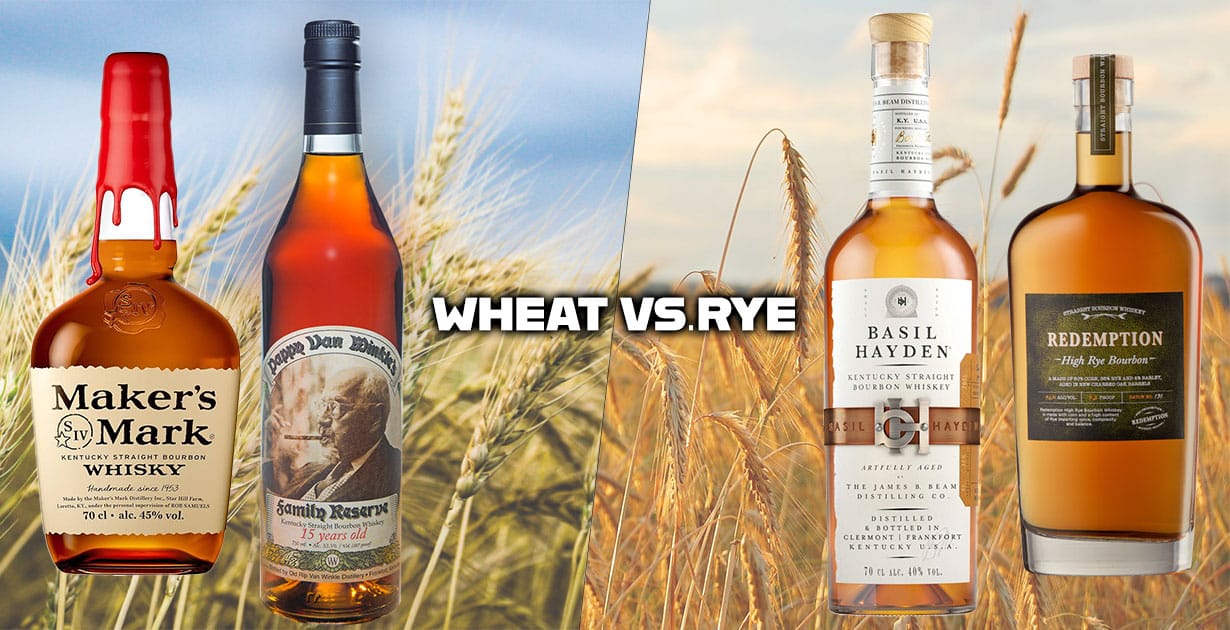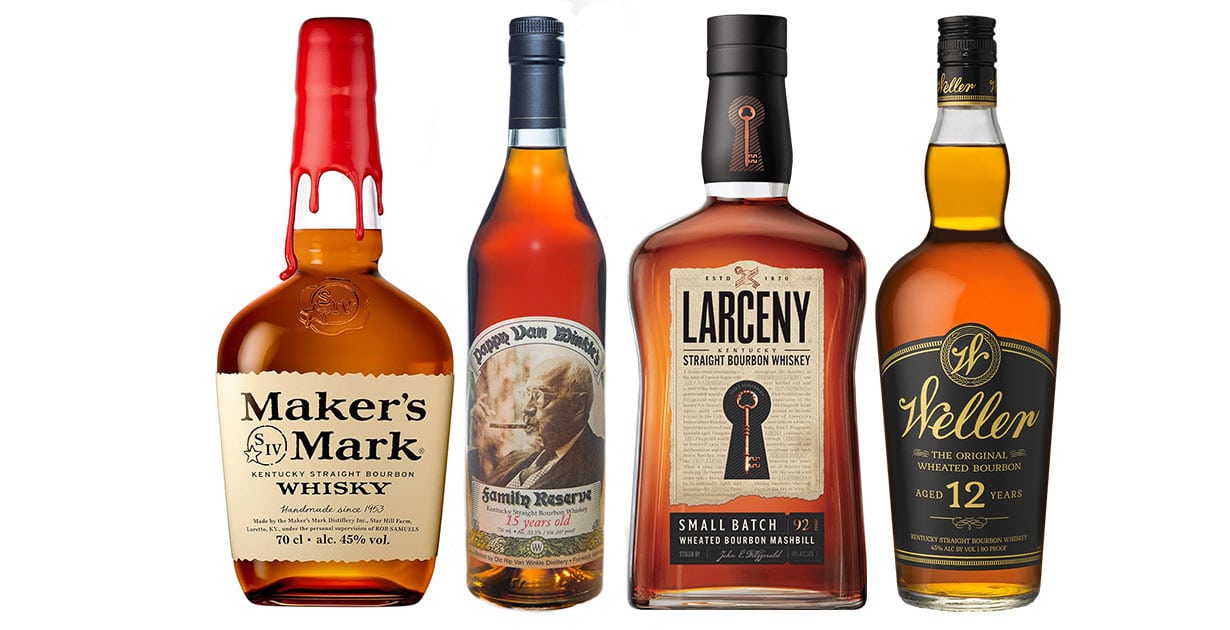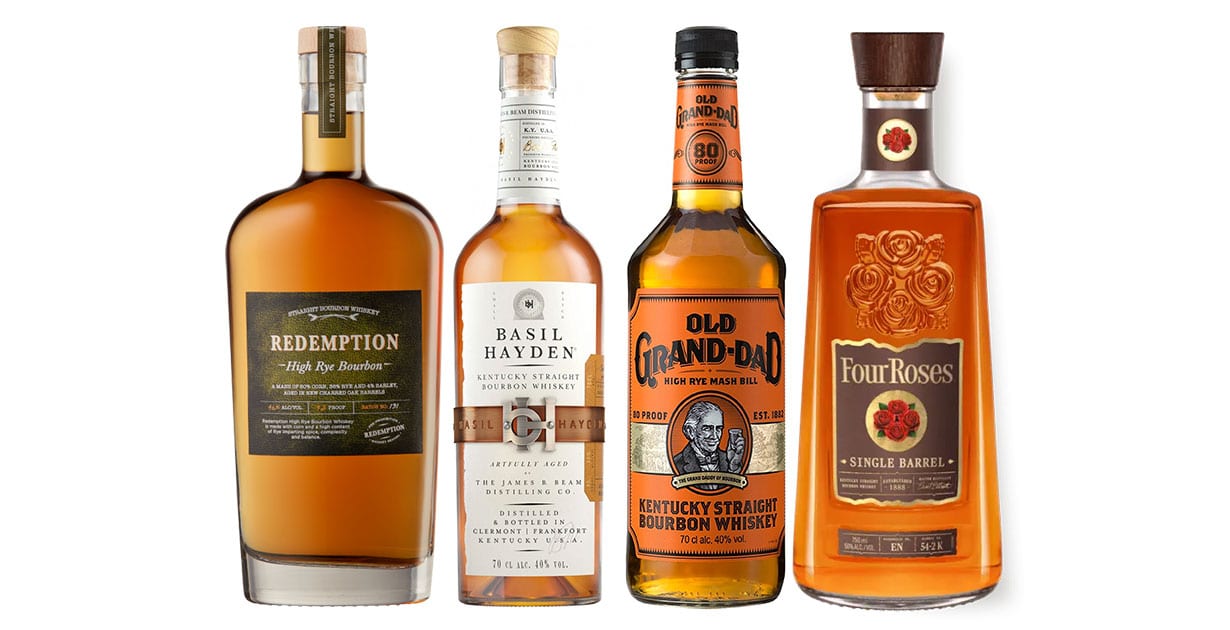
Not all bourbons taste the same. One of the biggest reasons is the mash bill – the mix of grains used to make the spirit. While all bourbon must contain at least 51% corn, what comes next makes a huge difference in flavor. The secondary grain is usually either wheat or rye, and that simple change has a big impact on what you taste in the glass.
In this guide, we’ll explain the differences between wheated and rye-recipe bourbons, offer examples of each, and help you figure out which style suits your palate. I have also included a ‘standout option’ for each category – two bourbons that helped me to explore wheat vs. rye.
What Makes a Bourbon Wheated or Rye-Based?
The mash bill of a bourbon determines its flavor profile. After the required 51% corn, distillers are free to experiment with different types of grain. The most popular are rye and wheat, with malted barley also gaining traction.
When referring to the ‘secondary grain’, we are talking about the grain that makes up the second highest percentage of the mash bill after corn. So, if a bourbon is 51% corn, 25% rye, and 24% malted barley (for example), the secondary grain is rye. It might be referred to as a “high-rye” bourbon. Rye is the most popular secondary grain.
If, on the other hand, the bourbon contains 51% corn, 25% wheat, and 24% malted barley, it would be considered a wheated bourbon.
What Makes Wheated Bourbon & High-Rye Bourbon Taste Different?
Wheat and rye affect how bourbon tastes because of the natural compounds they contain.
Rye has more spicy and aromatic oils. These give it flavors like black pepper, clove, cinnamon, and sometimes mint or citrus. Rye also has less sugar and more fiber than other grains, which leads to a drier, bolder taste. That’s why rye-based bourbons often feel more intense or complex.
Wheat, by contrast, is lower in those spicy compounds. It’s higher in starch, which helps create a rounder mouthfeel and softer flavors. Wheated bourbons tend to taste smoother, sweeter, and more mellow, with notes like caramel, honey, and fresh bread.
In short, rye adds spice and structure, while wheat brings softness and sweetness. That’s why two bourbons with the same corn content can taste very different depending on which grain comes next.
Of course, there are other factors that affect a bourbon’s final profile (finishing cask type, age, maturation conditions), but grain is often an overlooked factor.
What Does Wheated Bourbon Taste Like?
Wheated bourbons are known for their easy-drinking nature. They often taste sweeter and less sharp than rye-based ones, with a smooth finish and mellow warmth.
Popular wheated bourbons include:

Standout example: Maker’s Mark
Maker’s Mark is one of the most widely available wheated bourbons and a great example of the style. Its mash bill includes red winter wheat instead of rye, which gives it a softer, sweeter profile. Tasting notes typically include caramel, vanilla, and gentle spice, with a smooth, mellow finish. Whisky Advocate describes it as “as smooth as bourbon can possibly be,” highlighting its balance of sweet oak, fruit, and baking spices. That combination makes Maker’s Mark an ideal starting point for anyone curious about wheated bourbon.
What Does Rye-Based Bourbon Taste Like?
Rye bourbons bring more punch. They are spicy, bold, and often have a dry, lingering finish. The spice does not mean they are high-proof or harsh – it is a characteristic of the rye grain itself.
Popular rye-recipe bourbons include:

Standout example: Four Roses Single Barrel
With 35% rye in the mash bill, this bourbon balances floral and fruity notes with bold spice. Phil Dwyer calls Four Roses Single Barrel “one of my favourite bottles of whiskey in the world,” adding that the bourbon is “a testament to what all single barrel American whiskeys should aim to be.” As an added bonus, it is extremely affordable.
Expect notes of vanilla, caramel sauce, cherry, chocolate, a hint of oak spice, honey, maple syrup, citrus, and mint. Delicious.
Which One Is Right for You?
Wheated bourbon tends to appeal to those who enjoy softer, sweeter, and more easy-drinking whiskeys. If you gravitate toward smooth finishes, mellow warmth, and flavors like vanilla, caramel, and baked goods, then wheated bourbon is likely the better fit. It is a style that suits both beginners and those who prefer a gentle, approachable pour.
On the other hand, rye-recipe bourbon offers more spice, complexity, and heat. If you like a bit of bite or dryness in your whiskey, or enjoy flavors like pepper, clove, oak, and citrus, then high-rye bourbon may be the way to go. It delivers a bold, structured experience that many seasoned bourbon drinkers prefer.
Common Misconceptions
It is a mistake to assume that wheated bourbon is always smoother or that rye always brings harshness. In reality, factors like age, proof, and barrel selection all influence the final profile. Not every wheated bourbon is a Pappy, and affordable options like Maker’s Mark and Larceny provide an accessible way to explore the style. Similarly, not every high-rye bourbon is overpowering. Basil Hayden, for instance, offers rye character in a very mild and approachable package.
Final Thoughts
Understanding whether a bourbon is wheated or rye-based can help explain why you enjoy one bottle more than another. Wheat tends to make bourbon sweeter and smoother. Rye adds spice, structure, and complexity.
There is no “better” style – only what suits your taste. If you are just getting into bourbon, try both. A side-by-side of Maker’s Mark and Four Roses Single Barrel can be surprisingly eye-opening.
Whatever your palate prefers, there is a bourbon that matches it. The more you explore, the more you will understand what makes each pour unique.
Read the full article at Wheated Bourbon vs. Rye Bourbon: A Beginner’s Guide to Flavor and Style
